If you’ve noticed your hairline changing recently, you may have started researching hair loss and stumbled across the Norwood scale. Stage 2 is where most people first notice their hair changing, and look for Norwood 2 examples to compare to their own hairline.
I passed Norwood 2 in my early 20s and yes, I continued to lose my hair.
But just because I went completely bald, doesn’t mean you will. Norwood 2 isn’t necessarily the beginning of the end.
In this article, I’ll show some Norwood 2 hairline examples, as well as what you can expect if you’ve reached stage 2, and what your options are. Spoiler – you don’t have to shave your head!
Norwood 2 examples
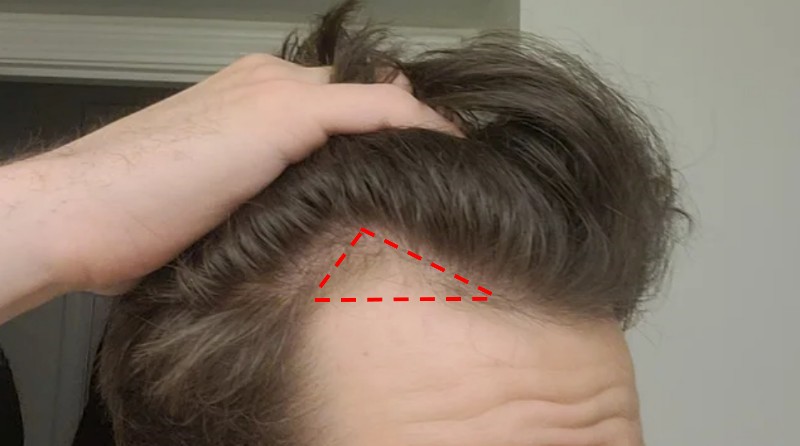
Example 1: Norwood 2 real example
The photo above is a classic Norwood 2 hairline example. It’s easy to see where the hairline has started to recede around the temples, but the frontal forelock is still intact.
Example 2: Leonardo DiCaprio
DiCaprio has always had a widow’s peak in the center of his hairline, but this has become more pronounced in recent years as his hair has receded at the temples. Leo is a classic Norwood 2 in the image below:

Example 3: Henry Cavill
Fellow actor Henry Cavill’s hair loss has been well documented, but was a definite Norwood 2 back in 2013 when he starred in Man Of Steel:

As you can see from the Norwood 2 examples above, it’s not a big deal to reach stage 2. The hair loss isn’t massively noticeable, but while plenty of people stay a Norwood 2 for life, it can also be just the start of a hair loss journey.
Example 4: Me
I started to lose my hair in my early 20s and shaved it off quite quickly. I’d shaved my hair before, so it wasn’t a big deal for me.
Camera phones weren’t great back then, so this photo isn’t the best, but it’s a real example of Norwood 2 hair rather than a celebrity, so I’ve included it below:
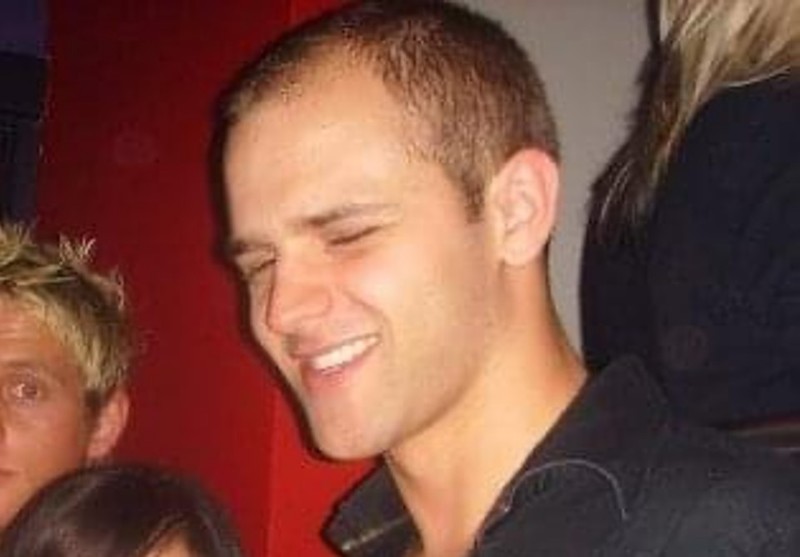
When I first started to recede at the temples I went with a short, cropped hairstyle, as you can see. I quickly transitioned to a buzz cut when it felt like the only option, and I’ve always been happy with the decision.
These days, people have far more choices and nobody should be pressured to shave their head just because that’s what other people suggest. More on this below!
What is the Norwood scale?
The Norwood scale, also known as the Norwood-Hamilton scale, is used to measure stages of Male Pattern Baldness. These stages range from a full head of hair at stage 1, to a fully bald head at stage 7, where the only hair grows around the back and sides.
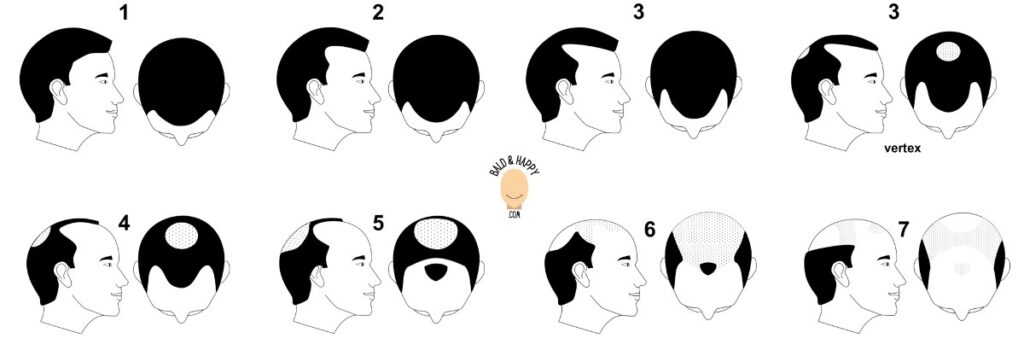
At Norwood stage 2, you’ll probably notice no more than a slight recession at the temples, and there’s no guarantee that your hairline will recede any further.
Is Norwood 2 balding?
Reaching stage 2 of the Norwood scale doesn’t necessarily mean a person is balding, and many who reach this stage stop receding altogether. However, the hairline can continue to recede, and stages 2.5 or 3 are what most experts consider to be balding.
Age is a key factor here. Men in their early 20s almost always experience slight recession at the temples, and this can be the first stage of male pattern baldness. Meanwhile, most men in their 30s will reach stage 2 and barely notice, and are much more likely to avoid any further hair loss.
If a young man in his late teens or early 20s progresses any further than a Norwood 2, it’s highly likely they’ll experience significant hair loss as they get older.
Can a Norwood 2 hairline stop balding?
A hairline that has reached stage 2 on the Norwood scale can definitely stop receding. If a head of hair is truly balding then it will continue, but often a Norwood 2 is just caused by someone’s natural hair settling into a mature hairline.
At stage 2 on the Norwood scale, men start to notice their hair receding at the temples. Many assume this is the start of a receding hairline, and worry that they’ve started on the journey to male pattern baldness (MPB).
However, this is perfectly normal, and actually, most men experience some recession at the temples and hairline in their early 20s.
This is known as a mature hairline, where the hairline recedes to this stage and then stops. Many people experience this level of hair loss and keep the rest of their hair for years to come, sometimes even for life.
The person in the photo above is a great example of this. The same person monitored their hairline over time and didn’t notice any further recession:
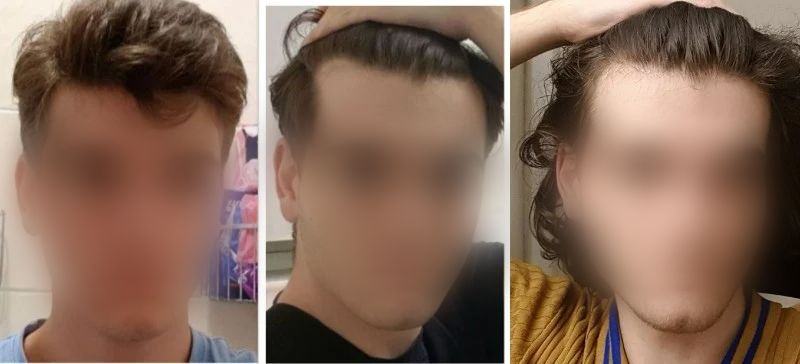
However, a receding hairline sometimes continues to stage 2a, which is the stage that most hair loss specialists consider to be the start of male pattern baldness.
Jude Law was around this stage in this interview in 2004:
As stage 2a progresses to stage 3, the center of the hairline will thin and start to recede backwards. In some cases, the frontal forelock can remain in place while the rest of the hair continues to recede from the temples, which is what happened as Jude Law’s balding continued:

However, it is possible to catch hair loss early and even reverse it at Norwood stage 2.
Can a Norwood 2 be reversed?
There are two ways to reverse hair loss at stage 2 of the Norwood scale. Medications like Finasteride are the best way to prevent and reverse hair loss if it is genetic. If external factors are to blame, addressing those can encourage hair regrowth.
If you have reached Norwood stage 2, ask your doctor about your options for hair loss medication. You may be a suitable case for Finasteride, a DHT-blocking medication that can help you keep your hairline intact for years to come.
DHT blockers have side effects, and Finasteride doesn’t work on everyone. Around 1.5% of people taking Finasteride experience side effects like erectile dysfunction, decreased libido, ejaculatory dysfunction, and other less common symptoms.
However, for the vast majority of users the medication is effective in slowing, stopping or reversing hair loss.
If your hair loss is caused by external factors, it’s highly possible to reverse hair loss by addressing the root (no pun intended) of the problem.
For example, The National Institutes of Health found that by removing the adrenal glands which produce stress hormones from mice, they could stimulate rapid regrowth of hair compared to a control group.
By reducing stress levels, you could reverse minor hair loss without touching medication like Finasteride.
Similarly, lifestyle factors like alcohol consumption, a nutrient-deficient diet, and smoking (including weed) can all cause hair loss. Some illnesses, and medication to treat others, also cause men to lose their hair.
Some of these contributing factors are easier to correct than others, but changes in lifestyle are especially effective if you can exercise enough willpower to change your habits.
Do people notice Norwood 2?
In all honesty, most people won’t notice if you reach stage 2 of the Norwood scale. If the corners of your hairline start to recede at the temples but your frontal area is still intact, it will barely register as most people typically just aren’t paying that much attention.
Someone you spend a lot of time with may happen to notice that your hairline has changed. This is especially true for a partner, as you’re likely to spend a lot of time up close and personal.
But the majority of people you interact with day-to-day are usually too busy with their own life to scrutinize your hairline.
Most anxiety about early hair loss is unnecessary, but that doesn’t mean it doesn’t affect people. While most people are too tied up in their own worries to focus on yours, hair loss is difficult, especially for young men.
Should I worry about a Norwood 2?
If you’ve reached stage 2 of the Norwood scale, it’s understandable that you’d worry about further hair loss. Worrying won’t help, but it’s patronizing to be told you shouldn’t worry about it, especially if you’re someone who is typically self-conscious about your appearance.
As mentioned above, hair loss can stop completely at Norwood 2, and your mature hairline can stay the same for the rest of your life. So monitor your hairline over time by photographing yourself and comparing the results.
If your hairline stops receding, you don’t have anything to worry about. A mature hairline is completely normal and most men recede around 1.5 inches compared to the hairline they have in their early teens.
If the receding continues to a Norwood 2.5 or even a 3, then at least you know you’re actually balding and can do something about it. The worst thing to do is nothing – if you take action, you can stop worrying and take control.
By taking action, you’re taking back control. Instead of being passive and watching your hair leave you, you can be the one who decides what happens next.
Now, the advice to ‘stop worrying’ is easier said than done. Some people are more conscious of their appearance than others, and I hate to see people being advised to ‘just shave it off’ before they’re ready.
If it’s not a big deal for you, that’s great. Make sure you have the right tools for the job by checking out my guide to the top electric head shavers.
Skull Shaver Pitbull Platinum PRO

- Wet & dry shaving
- 90 seconds and done
- Flexible shaving heads
- Cordless use up to 90 mins
If you’re brave enough to shave your head completely bald, I can recommend a razor for shaving your head, too.
But the truth is, shaving your head is a big decision for many, and can make a drastic change to your appearance. The result can be shocking when you see a different person staring back in the mirror.
Before you brave the shave, there are things you can do to prepare yourself, both physically and mentally, and make the transition easier. Building some muscle, getting a tan, and learning to dress well for your new hairstyle are all ways to look good bald.
By going for gradually shorter haircuts until you’re ready for a buzz cut, you can also avoid the shock of shaving off all your hair all of a sudden. It’s easier on you, and will be less noticeable and dramatic to others, too.
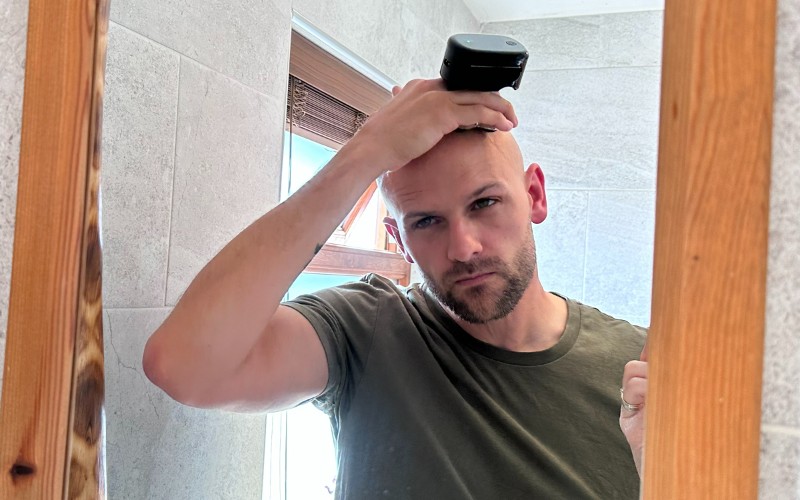
But understand that shaving your head isn’t the only option. Medications like Finasteride and Minoxidil can slow, stop, and even reverse your hair loss.
Hair systems are another valid option, although they require a lot of maintenance and aren’t the most practical. If you’re happy to shave your head but still want a full hairline, you could consider SMP (essentially a hair tattoo):
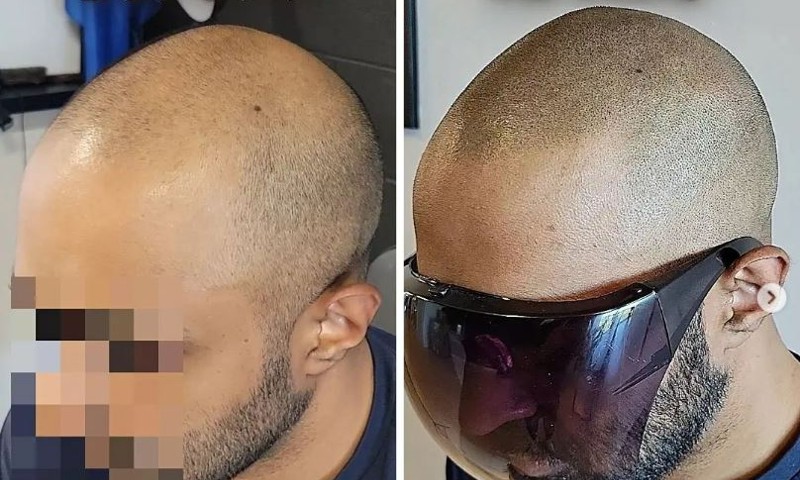
There is also another option that is becoming more popular all the time: a hair transplant. More on that below.
If you’ve weighed up all the options and you’re still unsure whether to shave your head or go down another route, download my free guide below which will help you make a decision:
Can a Norwood 2 get a hair transplant?
If you’ve reached stage 2 of the Norwood scale, a hair transplant is an option but there are things to consider before you make the decision. Most importantly, your hair loss may stop naturally at a Norwood 2 or progress to areas your transplant doesn’t cover.
A hair loss specialist can use a microscope to tell you whether your hair loss is simply the natural appearance of a mature hairline or genuine miniaturization of hair follicles. This will tell you whether your hairline is likely to recede further, in which case you can make a decision about a transplant.
If you combine a hair transplant in the thinned areas with Finasteride to prevent further hair loss, you might think you’re covered.
However, over time hair follicles often become more sensitive to DHT, the hormone that causes men to lose their hair. Therefore you could lose hair further back on the top of the scalp, while your frontal area remains intact thanks to your transplant.
Personally, I wouldn’t recommend a hair transplant to someone with a Norwood 2 hairline.
A hair transplant is a permanent solution, and the scale of the problem isn’t yet clear at Norwood stage 2. The hair loss isn’t noticeable enough and hasn’t progressed enough for a surgeon to understand how it will progress in the future.
How many grafts do you need for Norwood 2?
A hair transplant on a scalp at stage 2 of the Norwood scale would only need around 500-800 grafts to cover the areas affected by hair loss. This is compared to around 7,000 grafts to cover a fully bald head at stage 7, which isn’t an ideal transplant case.
At stage 2, only around half an inch to one inch of hair will have receded at the temples, which makes the number of grafts needed for an FUE hair transplant relatively low.
Summary
If you notice that your hair has receded to a Norwood 2, don’t panic. There’s every chance you’ve simply developed a mature hairline and you won’t experience any further hair loss.
If the hairline continues to recede to a Norwood 2.5 or stage 3, it’s time to make a decision. Don’t be pushed into it by anyone else, just know your options. Download my free guide below to help you decide what is the right choice for you:
Do you have any advice for men who have reached Norwood 2? Let me know in the comments below.

